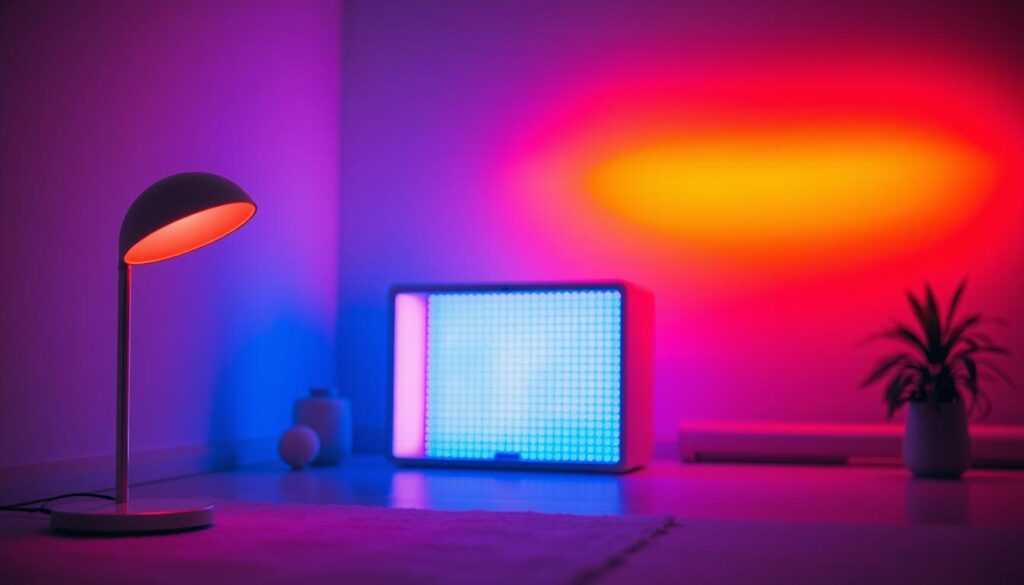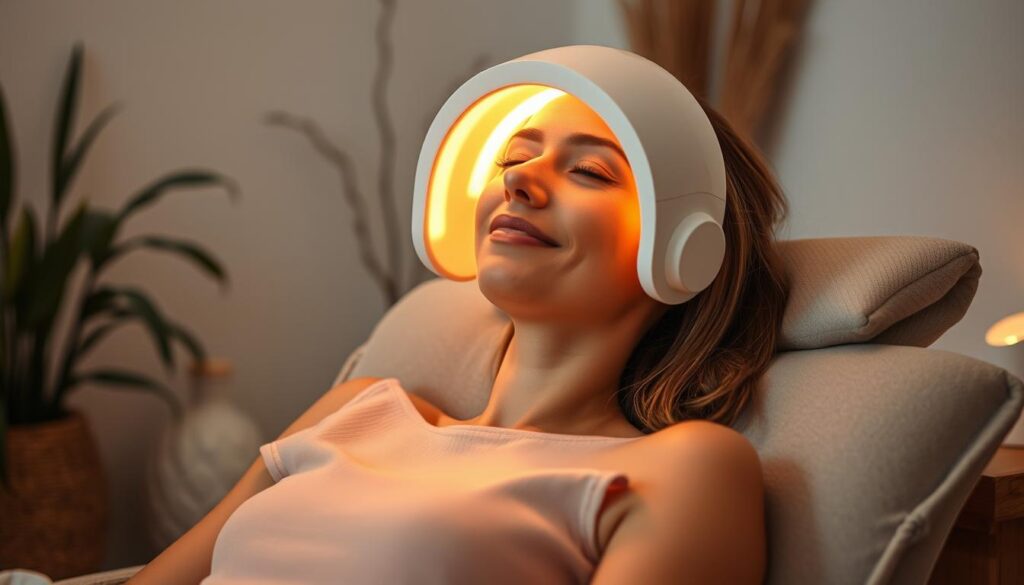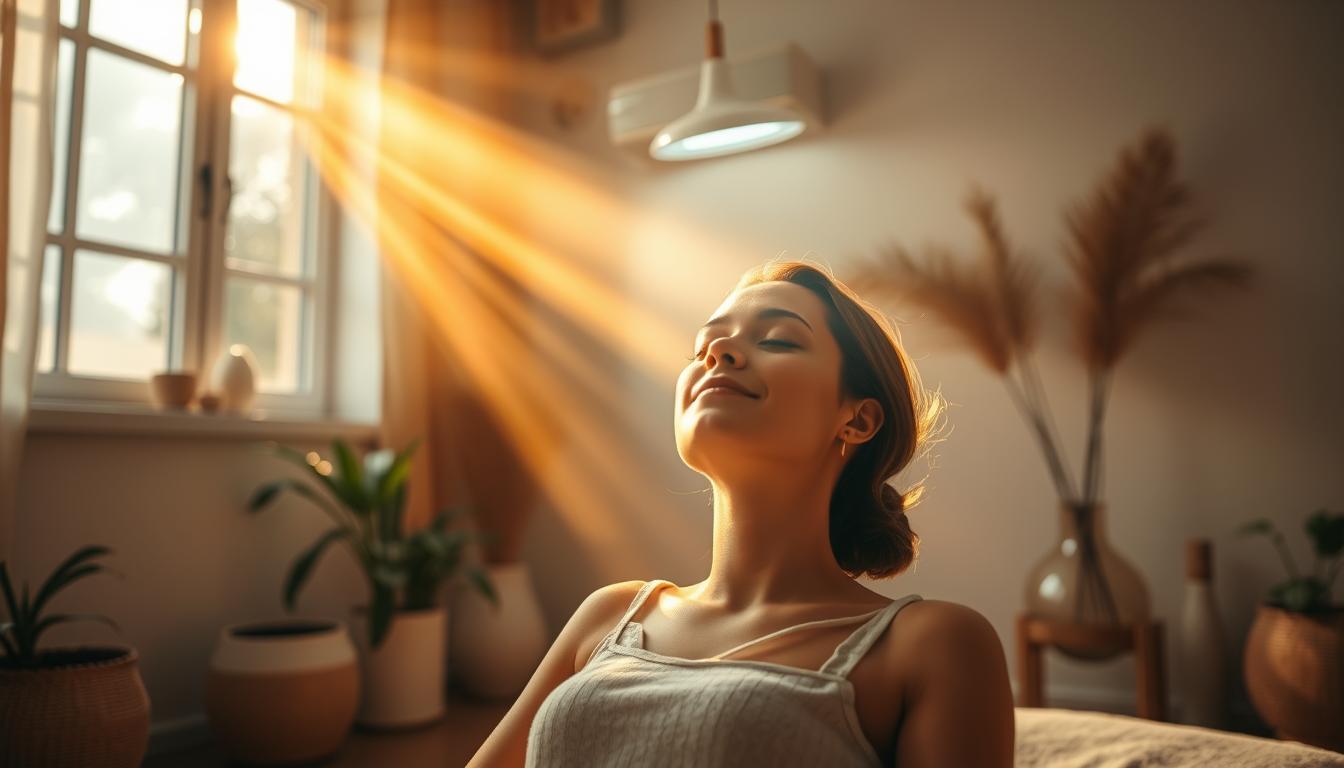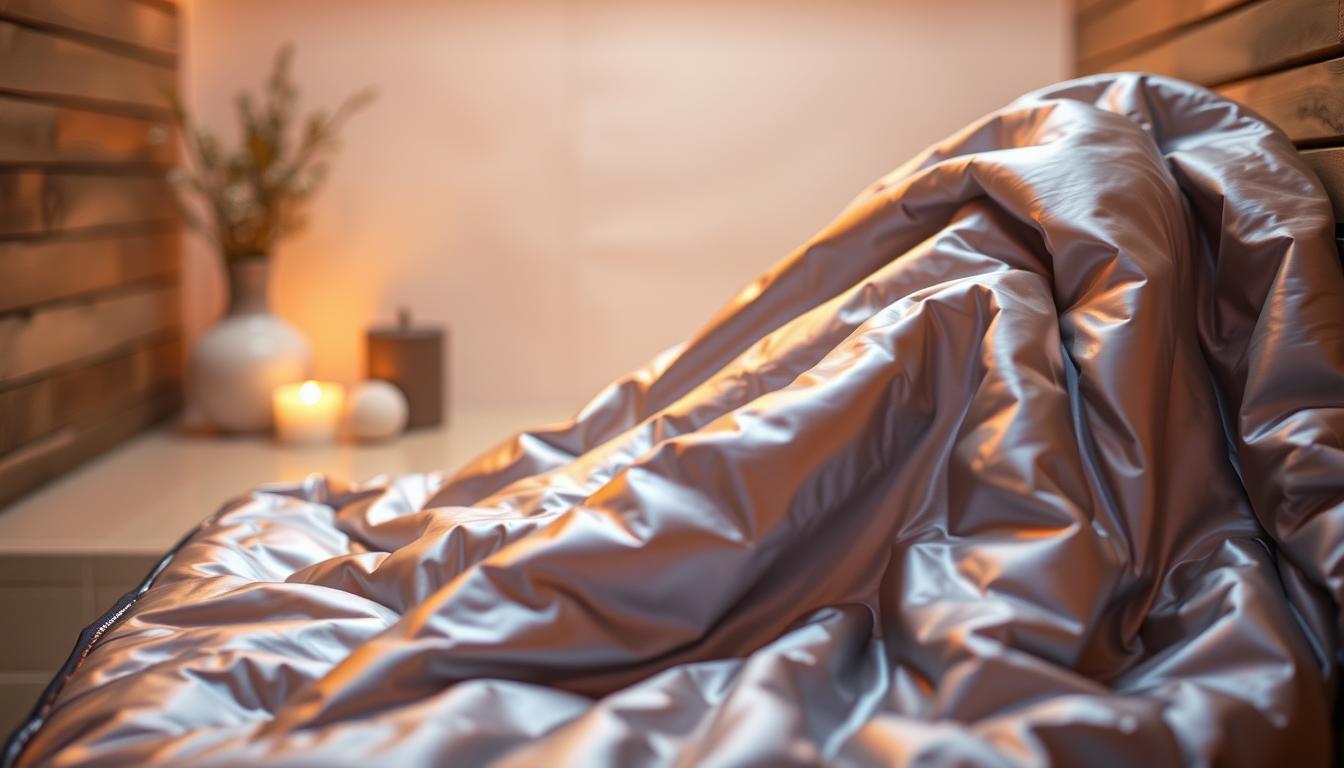Ever felt sluggish during winter months or struggled with stubborn skin concerns? You’re not alone. Many turn to modern solutions, but few realize one powerful method traces back to NASA research in the 1990s. Originally tested for wound healing in astronauts, this approach—now widely known as light therapy—has evolved into a versatile tool for both physical and mental wellness.
Dermatologists and doctors now integrate it into treatments for acne, inflammation, and even seasonal affective disorder (SAD). What started as clinical tech is now accessible at home through devices like LED masks. The science behind it? Specific wavelengths stimulate collagen, reduce bacteria, and sync circadian rhythms.
Whether you’re seeking clearer skin or a mood boost, this non-invasive method offers a research-backed path forward. Let’s explore how it works and why it’s gained such traction.
Key Takeaways
- Developed by NASA, light therapy now supports skin and mental health.
- Clinically proven to reduce acne, inflammation, and seasonal depression.
- At-home devices like LED masks make treatments convenient.
- Stimulates collagen production and balances circadian rhythms.
- Non-invasive with minimal side effects.
What Is Light Therapy?
Modern wellness tools are rooted in surprising scientific breakthroughs. One such innovation, light therapy, uses specific wavelengths to trigger biological responses. Unlike the sun’s broad spectrum, these targeted beams address skin and mood concerns without UV damage.
How Light Therapy Works
LED devices emit precise colors, each penetrating skin layers differently. Blue light stays near the surface, ideal for acne treatment. Red reaches deeper to boost collagen production. Near-infrared goes the farthest, aiding muscle recovery.
NASA first noticed these effects while studying plant growth in space. They found that red light accelerated wound healing in astronauts. This discovery sparked decades of research into how cells absorb light energy.
The Science Behind Light Therapy
Mitochondria, the powerhouses of cells, play a key role. They convert light into ATP energy, speeding up repair. Here’s how wavelengths compare:
| Color | Depth | Primary Use |
|---|---|---|
| Blue | Surface | Kills acne bacteria |
| Red | Dermis | Stimulates collagen |
| Near-infrared | Deep tissue | Reduces inflammation |
Professional treatment uses higher-intensity devices. At-home tools like LED masks offer convenience but require consistent use. Both are UV-free, unlike tanning beds that risk sun damage.
Note: Therapy may cause mild redness or dryness, but serious side effects are rare. Always follow device guidelines for optimal results.
Key Benefits of Light Therapy
Visible changes start at the cellular level with targeted wavelengths. Research shows specific colors improve skin, mood, and chronic conditions—without drugs or invasive procedures.
Clearer, Healthier Skin
Blue light reduces acne by 70% in studies. It kills bacteria while calming redness. Red light penetrates deeper, boosting collagen to minimize wrinkles.
For severe conditions like psoriasis, remission rates reach 60–90%. Consistent use also helps eczema flare-ups by reducing inflammation.
Brighter Moods, Sharper Minds
The FDA approves light boxes for seasonal depression. Daily 30-minute sessions regulate serotonin, easing winter fatigue. Dementia patients also sleep better with timed exposure.
Targeted Pain Relief
Near-infrared light reaches joints and muscles. Arthritis patients report 50% less pain after 4 weeks. Athletes use it to speed recovery.
| Condition | Light Type | Improvement Rate |
|---|---|---|
| Acne | Blue | 70% reduction |
| Wrinkles | Red | 40% smoother texture |
| Joint Pain | Near-infrared | 50% less discomfort |
Therapy may require consistency, but side effects are rare. Always consult a doctor for chronic issues.
Types of Light Therapy
Different wavelengths serve unique purposes, from smoothing wrinkles to fighting bacteria. Each color targets specific concerns, making it essential to choose the right device for your needs. Here’s how the most common types compare.

Red Light Therapy
With a wavelength of 630–660 nm, red light boosts collagen production. It penetrates deep into the skin, reducing fine lines and improving texture. Studies show a 40% improvement in skin elasticity after consistent use.
Devices like LED masks often combine red and near-infrared for enhanced results. Ideal for anti-aging, this treatment requires just 10–20 minutes per day.
Blue Light Therapy
At 415 nm, blue light kills acne-causing bacteria on the skin’s surface. Dermatologists recommend it for breakouts, with studies showing a 70% reduction in acne. Portable spot devices make targeting blemishes easy.
Unlike red light, it doesn’t penetrate deeply. Use it for 15-minute sessions to avoid dryness.
Yellow and Near-Infrared Light
Yellow light (590 nm) enhances lymphatic flow, reducing puffiness. Near-infrared (800–850 nm) speeds up wound healing and soothes muscle pain. Both are common in post-surgery treatments.
Note: Green light has limited efficacy due to shallow penetration. Stick to clinically proven wavelengths for best results.
- Red light: Anti-aging, collagen boost
- Blue light: Antibacterial, acne control
- Yellow light: Detoxification, reduced swelling
- Near-infrared: Deep healing, pain relief
Conditions Treated by Light Therapy
Healthcare innovations continue to reveal surprising solutions for stubborn conditions. Research-backed light wavelengths now address everything from inflamed skin to neurological imbalances. Here’s how clinics and at-home devices tackle specific challenges.

Skin Conditions: Beyond Acne
Narrowband UVB (nbUVB) light slows rapid cell growth in psoriasis, reducing plaques by 60–90%. Scalp applications show similar success. For eczema, studies note fewer flare-ups due to reduced inflammation.
PUVA therapy combines UVA light with oral psoralen, achieving 70% vitiligo repigmentation. *Caution:* Long-term use may increase skin cancer risk. IPL devices also unclog pores for blackhead-prone skin.
Mood and Neurological Support
Light boxes regulate serotonin and melatonin, easing depression linked to seasonal affective disorder (SAD). Daily 20–30 minute sessions mimic sunrise, combating winter fatigue.
Off-label uses show promise for dementia patients, improving sleep cycles. Note: Bright light therapy isn’t recommended for bipolar disorder without medical supervision.
Chronic Pain Management
Red light holds FDA clearance for osteoarthritis and carpal tunnel pain. Near-infrared penetrates joints, with studies reporting 50% less discomfort after consistent use.
Dentists trial it for post-surgery healing, while oncologists explore graft-versus-host disease relief. *Always consult a doctor for severe symptoms.*
- Psoriasis/eczema: nbUVB reduces plaques and irritation.
- SAD: Light boxes rebalance mood-regulating hormones.
- Arthritis: FDA-approved red light eases joint stiffness.
How to Use Light Therapy Safely
Safety should always come first when exploring wellness innovations. Whether you choose a home device or clinical treatments, understanding protocols prevents side effects and enhances results.
At-Home vs. Professional Options
Clinical treatments deliver faster results with high-intensity devices, often in 20-minute sessions. At-home tools like LED masks require daily use (10–20 minutes) for 4–5 weeks to show visible changes.
Smart Usage Guidelines
Follow these steps for optimal safety:
- Cleanse skin before use to maximize absorption.
- Start with 3-minute sessions, gradually increasing to 10 minutes per day.
- Apply serum or SPF post-treatment to protect skin.
Avoid devices if using isotretinoin or with a history of eye disease. Consult a doctor during pregnancy.
Note: Blue light may accelerate aging via free radicals. Pair with antioxidants for defense. Consistency is key—skip days delay results.
Conclusion
Click the link for your Light Therapy device
Science continues to unlock new ways to enhance well-being with simple solutions. Light therapy stands out for its versatile benefits, from clearer skin to balanced moods and pain relief. Combining clinical treatments with at-home devices often yields the best results.
Always consult a doctor for chronic conditions. Ongoing research explores its potential for dementia and other neurological support.
Ready to see the difference? Explore FDA-cleared devices or talk to a dermatologist. Your health journey could start with just 10 minutes a day.



